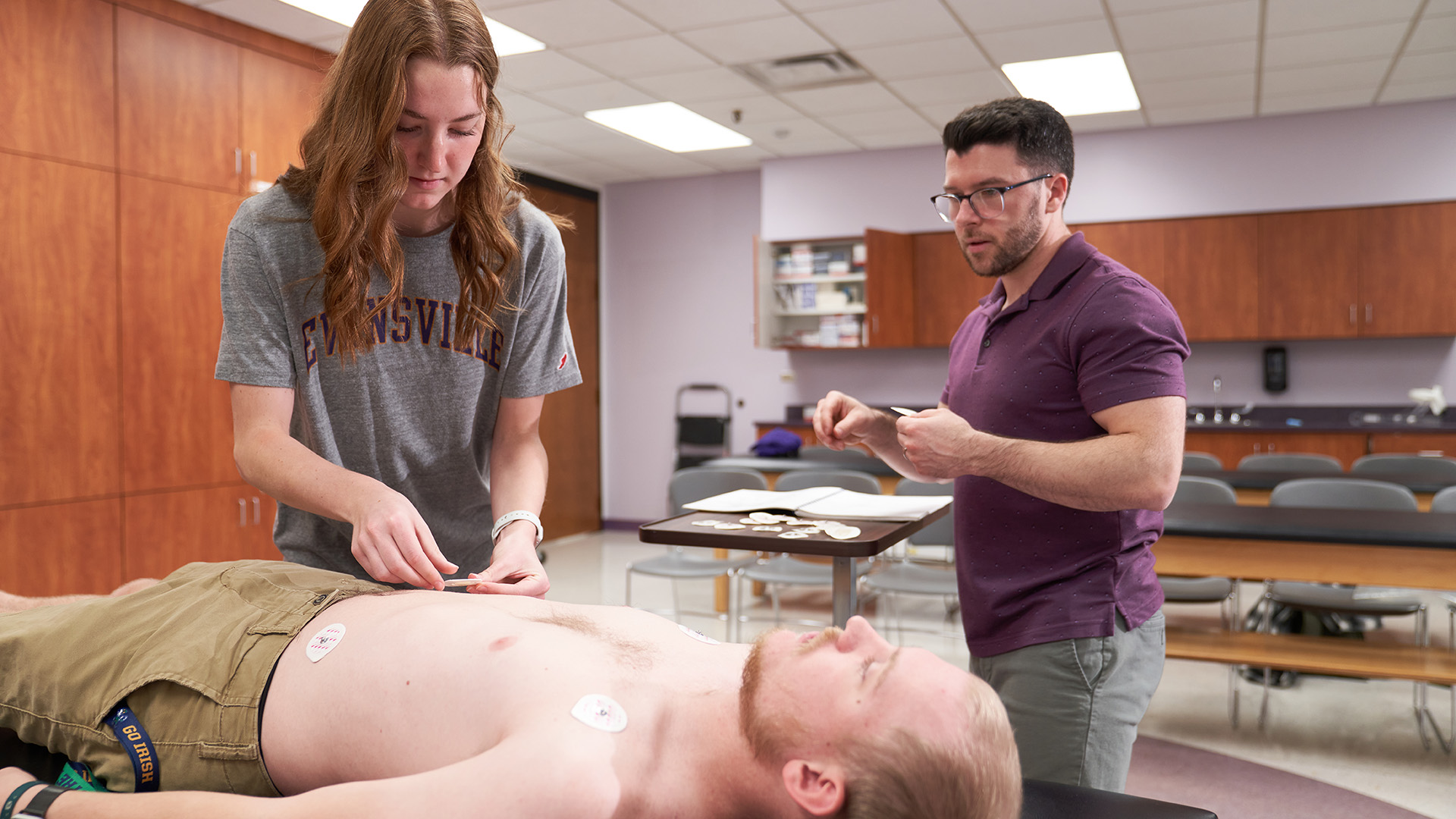Laboratories
Exercise and sport science majors have a wide variety of laboratories in which to learn and conduct research.


Human Performance Lab
This is an undergraduate laboratory primarily used for teaching and research purposes. Some of the analyses performed in the lab include oxygen consumption testing using various ergometers, body composition, strength assessment, lactate thresholds and exercise stress tests with 12-lead EKG. The lab is used for teaching Exercise Physiology Lab (EXSS 415) and Exercise Testing and Leadership (EXSS 427)
In the Human Performance Lab, students will learn about:
- Body Composition
- Oxygen Consumption
- Lactate Threshold
- Exercise Stress Tests with 12-Lead EKG
- Basic Fitness Assessment
Body Composition

The Human Performance Lab offers several types of body composition testing. Currently we offer four methods of assessing body composition. Each method uses a different methodology as described below.
Skinfold calipers are used to determine subcutaneous fat at various sites on the body. Based on theses measurements the body fat for an individual can be determined. Skinfold measurements are one of the most economical methods of determining body fat.
Bioelectric impedance is a method that measures the electrical conductivity of the body to determine body composition. Bioelectric impedance passes a small electrical current through the body via electrodes attached to the wrist and ankle. The measured resistance to the current flow through the body determines body fat.
Near infrared is a technique that measures subcutaneous fat via an infrared beam. The infrared beam is passed through the dominant biceps muscle of the arm and the interaction of the beam with the contents of the arm help in determining the amount of subcutaneous body fat.
Underwater weighing is also performed to measure body composition. Underwater weighing has been considered as a standard method for determining body composition. Using this method the subject is submersed under water to determine the body density which is then used to calculate the body composition.
Oxygen Consumption
Oxygen consumption measures aerobic capacity and can be performed on a treadmill, leg ergometer or arm ergometer. To perform this technique the subject is connected to a "metabolic cart" or a breathing apparatus that measures the content and volume of inspired and expired air. The subject then performs a graded exercise test where the difficulty of exercise is increased incrementally. The graded exercise test can be done to exhaustion and lasts from 8 to 15 minutes. If the subject does not want to exercise to exhaustion, then a submaximal graded exercise test can be performed before exhaustion occurs.
Lactate Threshold
The lactate threshold is performed to determine the level of exercise at which lactic acid spills into the blood. During this procedure the subject performs a graded exercise test on a leg ergometer or treadmill and blood samples are taken via finger stick to determine blood lactic acid. Blood lactic acid values are then plotted versus exercise intensity to determine the intensity of exercise where lactic acid is spilled into blood at high levels. This procedure is helpful in determining the highest level of performance an athlete can achieve before lactic acid hinders performance.
Exercise Stress Tests with 12-lead EKG
This procedure is used clinically to screen individuals for heart disease. In the University of Evansville Human Performance Lab, this procedure is used to teach the students the principles of 12-lead EKG technology and how it is used in stress testing. Using this technique, a resting EKG is first obtained then a graded exercise test on a leg ergometer or treadmill is performed. The exercise is used to "stress" the heart in an attempt to unmask any cardiac problems not seen by the resting EKG. Immediately following exercise a recovery EKG is taken to detect any cardiac abnormalities that may result during the recovery phase.
Basic Fitness Assessment
The Human Performance Lab is used in other courses including Exercise Testing and Leadership (EXSS 427) where a basic fitness assessment is conducted by the EXSS student on their client. The basic fitness assessment includes measurements such as height, weight, BMI, waist to hip ratio, body composition, resting blood pressure, resting heart rate, flexibility, strength and aerobic capacity.
Dunigan Movement Analysis Lab
Made possible by the Larry and Sharon Dunigan family, the Dunigan Movement Analysis Lab was created in 2006 to advance the body of knowledge related to the analysis of human movement for greater quality of life.


Office Phone
812-488-2848
Office Email
exss@evansville.edu
Office Location
Room 219, Wallace Graves Hall
